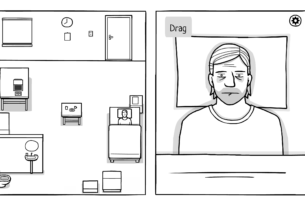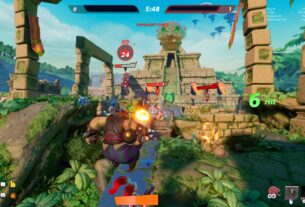
What is it? A mythological Total War
Developer: Creative Assembly Sofia
Publisher: Sega
Reviewed on: GTX 1080Ti, Intel i7-8086K, 16GB RAM
Multiplayer? Yes
Link: Official site
The work never stops when you’re trying to organise a holiday to Troy with a bunch of your Greek mates. I just want to smash some walls, but I’ve got soldiers freaking out about bad omens, centaurs that need fed, petulant deities setting fire to shit like bored pyromaniac teens, and people pestering me endlessly about bronze they really don’t need. Get your own bronze, Achilles! A Total War Saga: Troy never lets up.
With Thrones of Britannia, the previous Saga, Creative Assembly chipped away at systems and tossed out others, including agents, trade and military buildings, leading to a brisk, streamlined war. Troy, which is being steered by Creative Assembly Sofia, throws most of it back in—for better or worse. It’s a dense, complex conflict that’s a collision of old and new ideas, some of which are brilliant, while others probably needed a bit more time in the kiln.
If you’ve read The Iliad, The Odyssey or any of the other epic Greek dramas that serve as Troy’s inspiration, you’ll know that everyone’s kind of a dick, especially the gods. Thanks to some divine meddling, this Orlando Bloom-looking arsehole runs off with Helen, the Spartan queen, and takes her back to the titular city, plunging the Aegean into a brutal war. Troy still lets you fight whomever you want, but everyone is ultimately gearing up for this big brawl between east and west.
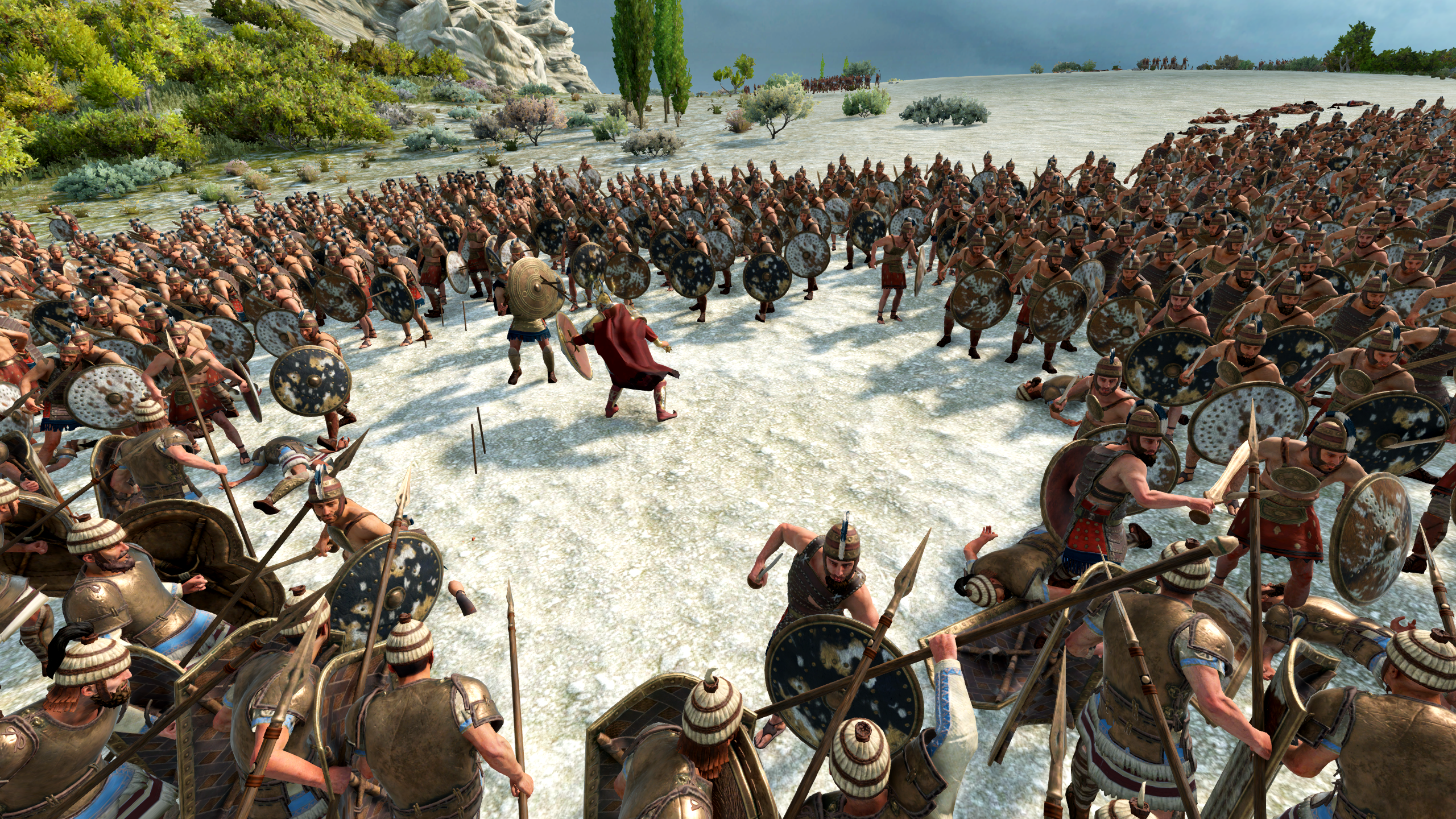
Each of the eight factions has its own narrative-driven epic quest, but victory only happens when you’ve destroyed your adversaries across the sea, something that will be a lot easier if you’ve wrangled your neighbours into a big alliance or swallowed them up through conquest or a confederation. It’s an all-encompassing conflict that leads to Troy being the most purposeful Total War I’ve ever played. While you’re getting ready for the big showdown, however, there are a lot of distractions.
Troy’s shtick is that it’s trying to present a more grounded version of mythology. There are minotaurs, centaurs, giants and more, all of which can be fielded in battle—but really they’re just humans. Giants are just big hairy dudes, for instance, while centaurs are simply warriors on horseback. There are gods, too, and while you won’t see Poseidon swimming around, not showing them the proper respect will lead to disasters like earthquakes and fires. One of my generals got very sad when Aphrodite ‘made’ his wife cheat on him.
Appeasing the gods means killing loads of bulls in their name. It’s a meaningful sacrifice, too, because those bulls would normally feed your troops. As well as keeping them happy, these sacrifices effectively level the gods up, giving you more passive bonuses and even letting you recruit new units and agents. Trying to find the right balance and keeping as many gods as possible in your pocket is a tough juggling act, and it’s easy to forget about them when you’re embroiled in a war, but the extra layer of micromanagement is worth it for the specialisation options it opens up.

Food isn’t the only resource you need to worry about. There’s wood, stone, bronze and gold, which you’ll need to fund your building and recruitment efforts. The range of resources means that, even if you’ve got a deficit somewhere, you’re probably still going to be able to build or recruit something, and it’s a rare turn where there’s nothing to do. These new resources also create targets, directing the flow of your conquest of the Aegean.
Every province contains a fortified capital city and some smaller settlements tied to a particular resource. If you’re running low on food, you can take a quick look at the map and see where all the food-producing settlements are, so you know where to send your starving spearmen and minotaurs. These provide a constant supply of resources, but some also have additional finite resource nodes that offer an even larger haul, so you’ll want to grab them before another faction exhausts them.
These resource wars give the early game a lot of momentum, but it doesn’t last. I finished my first game around turn 100, but I barely had to think about my stores and larders after 40. There are just so many ways to get resources, through multiple buildings, trade and, if you’re playing as King Agamemnon of Mycenae, demanding it from vassals as tribute. Unfortunately, that won’t stop the AI from constantly pestering you for a bit of bronze. There’s yet to be a Total War where the AI won’t spam you with requests, but here it’s especially egregious. It doesn’t matter if they’ve got a massive stockpile, they will beg you for more.
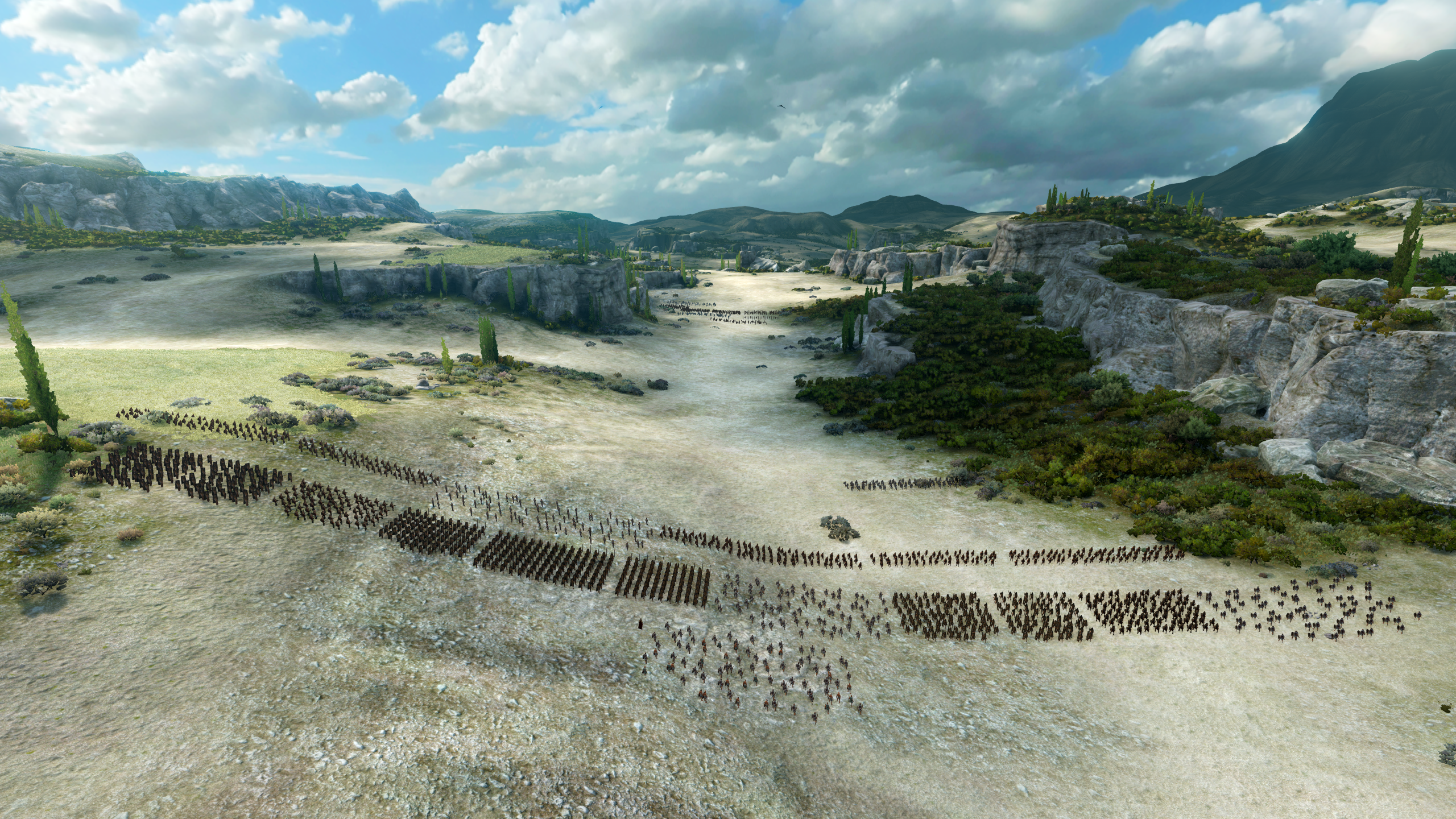
Continuing the progress made in Thrones of Britannia and Three Kingdoms, Troy has none of the performance issues that once plagued Total War—I’m looking at you, Rome 2.
The turn times are brisk, even when it’s at its busiest, and you can expect the load times to similarly fly by, at least if you’ve shoved it onto an SSD. If it’s an option available to you, always put your Total Wars on your SSD.
On a couple of occasions it crashed after it was alt-tabbed for an extended period, but that was the extent of the issues I encountered after a week of playing.
I’m not sure what to make of the AI. On the campaign map, it can be a competent opponent one minute, only for it to spend the next 10 turns aimlessly sailing around the Aegean not actually doing anything. This was especially noticeable when I went to war with the Amazons.
Once you’ve become a big strategic threat, you’re assigned an antagonist. Just like real life! This is another powerful faction that’s got some grudges against you, and the only way to win the conflict is outright annihilation. Your allies will generally leave it up to you, and there’s no option for diplomacy. It’s a neat feature that leans into the most aggressive parts of Total War, and it means there’s a bit more to the conflict than just conquering or defending Troy. The Amazons, unfortunately, never even made it to Greece. The war went on for many turns, but despite being told that they were poised to start sacking all my undefended settlements, they seemed happy to potter around in the sea.
In the real-time fights, the AI seems to have a better handle on things. I’ve spotted my adversaries making dumb decisions, but fighting a perfect opponent wouldn’t be much fun. What’s most noticeable is their reactivity. They’re less committed to their strategies and can quickly adapt, leading to battles that have a much more exciting flow.
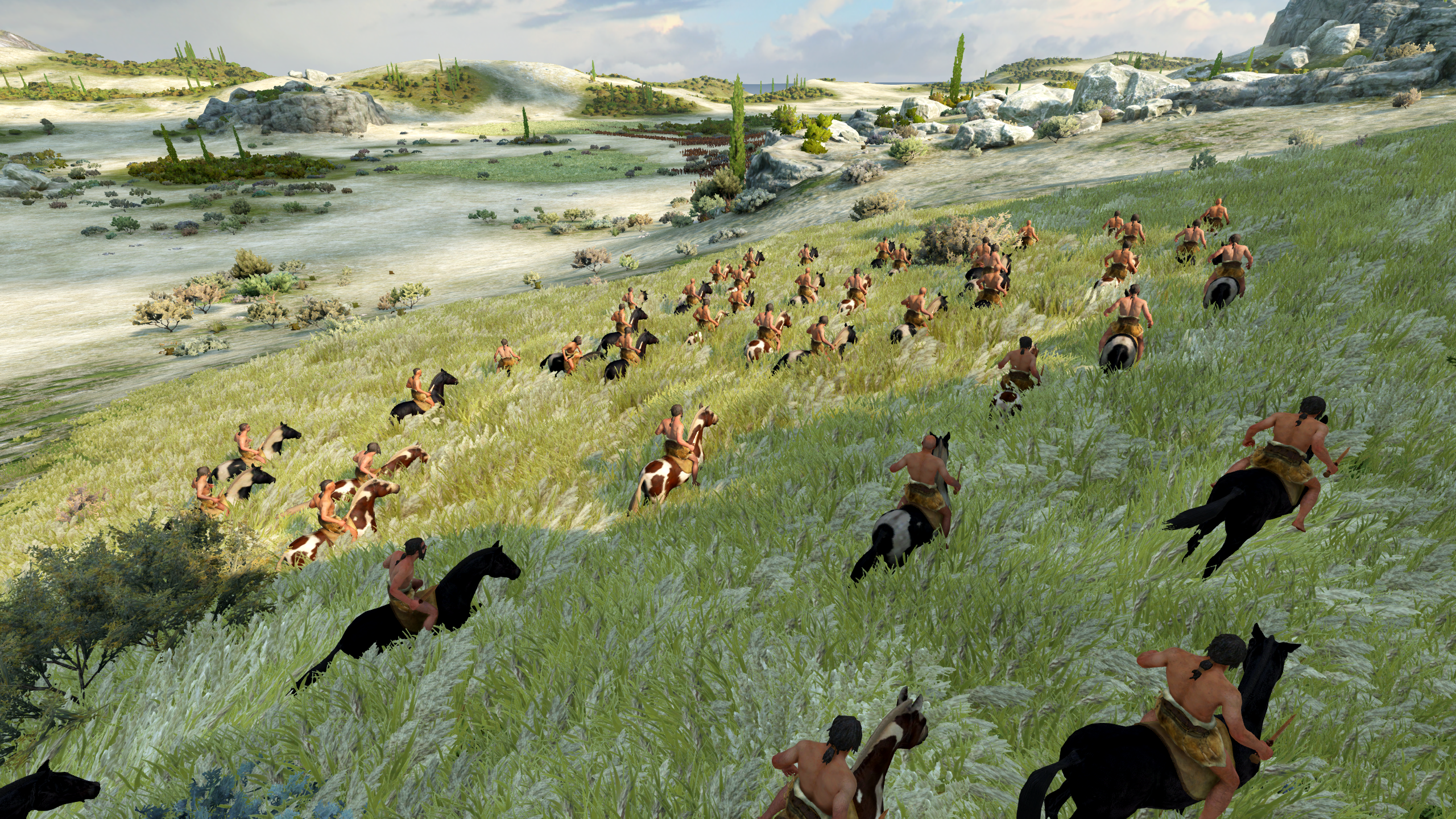
Troy represents possibly the most significant evolution of Total War’s combat in years. Aside from chariots and special mythological units like the centaur, there’s no cavalry. It’s all about infantry this time, but the troop roster is just as diverse. It does mean that veteran players will need to drop some old notions, like spearmen being defensive units that protect your army against cavalry attacks. Indeed, one of the first spearmen units you’ll recruit is actually a fast, mobile charging unit that you’ll want to rush in with and then pull out quickly—not unlike cavalry. For Total War, that feels a bit counter-intuitive, so expect some cock-ups before you get used to them.
As well as having roles like charger and defender, units are split up into different weight classes, determining their speed and how they deal with some of the new terrain features. A light unit will be able to outrun heavier ones, sprint through mud without getting stuck and get into the perfect position for a flanking attack, while heavy units can take more of a beating and sit comfortably in your frontline. A small number of units can also switch from defensive to offensive roles by putting their shields away, increasing their damage output.
This all contributes to battles being more micromanagement intensive, but not to the point where controlling them is too fiddly. You just need to be ready to make adjustments and take advantage of your specialists, finding vulnerable enemy flanks or employing some stealth. Shame about the sieges, then, which just feel like slogs, especially since siege weapons have yet to be invented. I clicked auto resolve a lot. There’s less room for Troy’s smart tactics, so they’re just dull meat grinders.
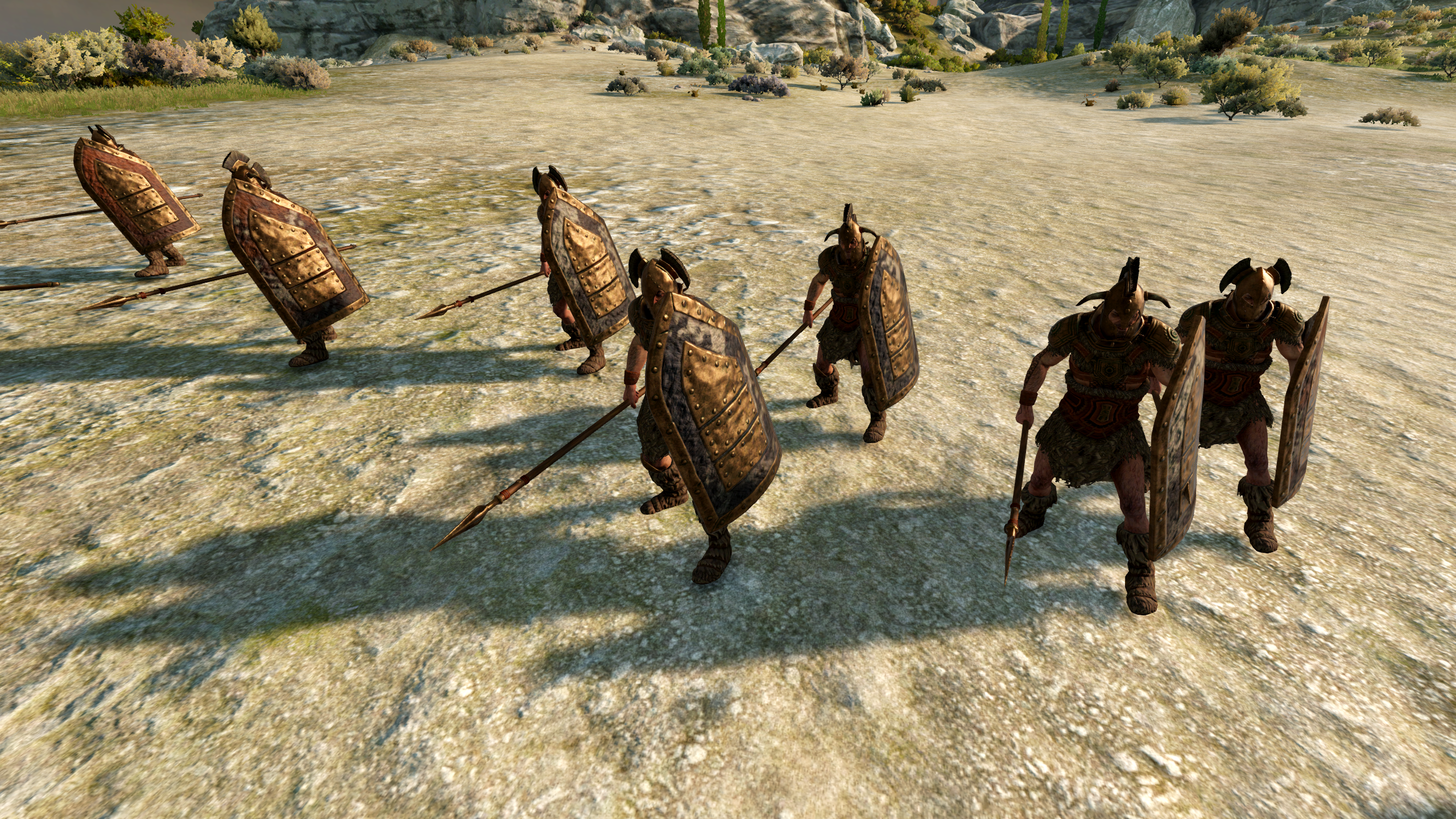
Heroes unexpectedly make less of an impression than the rest of the roster, at least in the midst of battle. Leaders and generals have been toned down since Three Kingdoms but otherwise haven’t been changed much. They’re like Romance characters, but a bit shit. They have buffs and debuffs—mostly forgettable, apart from the very handy heals—can get into duels and are much tougher than your average warrior, but their impact on battles is considerably less dramatic and they simply aren’t as much fun to command.
In the campaign, however, they’re the driving force. Their obsession with Helen (who is just a passive stat boost that you can steal), thirst for vengeance, and epic quests are all at the forefront, and Creative Assembly Sofia has used these legendary celebrities to define the factions. Achilles is quick to anger, which is reflected in his shit management skills; Paris and Hector both compete for their father’s attention, hoping to lead Troy; Odysseus and his warriors are sneaky, cunning ambushers—but Three Kingdoms still did it better. Gone is the web of relationships and nuanced personal diplomacy, replaced instead by characters who have plenty of unique traits, sure, but not nearly as much personality.
Troy’s maps are a high point, both aesthetically and tactically. They’re bright, fantastical things evocative of Assassin’s Creed Odyssey’s impossibly beautiful vistas, and they’re full of quirks. Chokepoints, cover, varied elevations and lots of places to hide—they beg to be replayed and experimented with. More than ever before, terrain feels like both an adversary and an ally. It’s unfortunate, though, that mud, sand and tall grass feature so infrequently. They were touted as important new additions, but I hardly fought any battles where there was an opportunity to take advantage of them. The most common is tall grass, but since that just serves a similar function to trees, letting you hide some of your troops, its impact isn’t that noticeable.
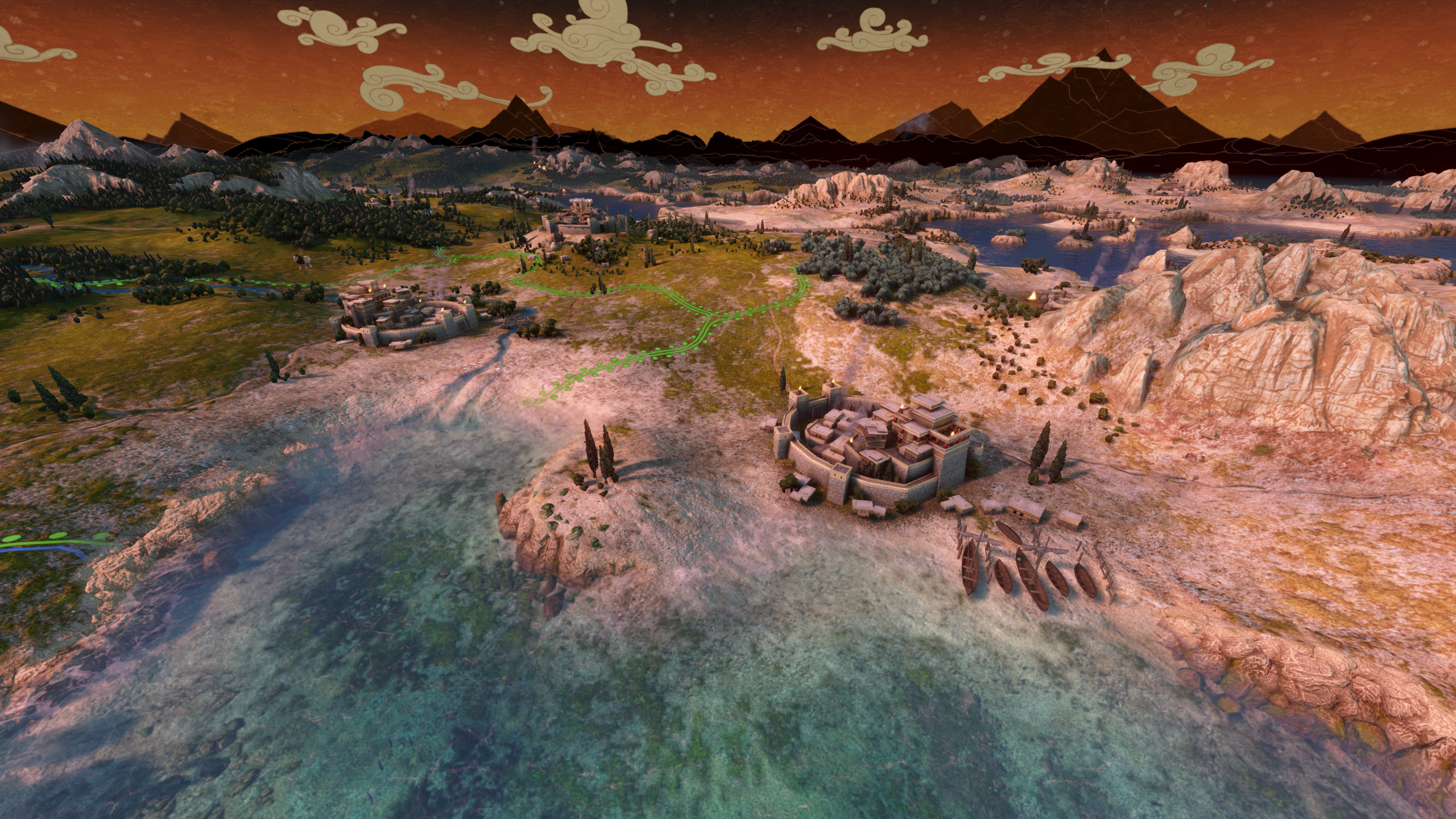
Out of battle, the map of the Aegean is even more stunning. It’s map porn, squeezing as much visual flair out of the setting as possible. The skybox and distant mountains are even rendered in black figure pottery. I just wish it wasn’t full of agents constantly trying to assassinate people, poison cities and perform religious rituals. Yes, they’re back, and yes, they’re still a pain in the arse. Spies, seers, priests, envoys, even some one-shot epic agents—there are too many of them, and few of their abilities couldn’t be given to generals or off-screen followers. The map’s busy enough without them.
Generally, though, the busyness is part of the appeal. Trying to bring all your neighbours together for a big war, managing the petulant gods and building up a massive war chest is engaging stuff. It’s only once you’ve become really established that the economy and diplomacy becomes largely superfluous, and then the cracks start to appear. And even then, it never completely falls apart.
This Total War experiment, then, is more of a success than Thrones of Britannia, and I pray the tactical shake-up won’t be forgotten when cavalry inevitably reappears with the next game. But now that I’m done with this review, I’m already planning to head back to Warhammer 2 and Three Kingdoms instead of starting another Aegean war. Sorry, Troy.
Read our review policy
Refreshing tactical changes and some of the best maps in the series make this an experiment worth checking out.


